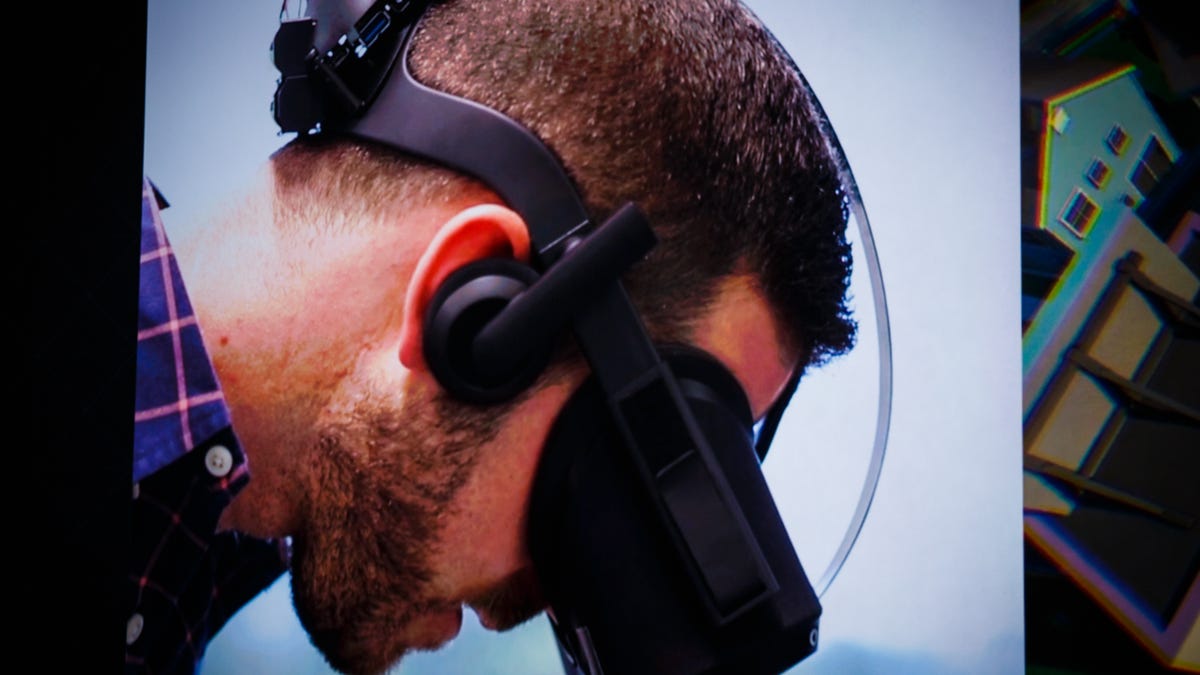I tried the wireless Oculus Rift. It tasted like freedom
I spun right round like a whirling dervish and still didn't feel sick.
Wireless isn't new. The Microsoft HoloLens is wireless. The Intel Project Alloy is wireless. Qualcomm has a wireless VR headset too.
None of them create a virtual world as stunning as what the Oculus Rift's annoying tether can produce.
But just tried a wireless Oculus Rift. And by "tried," I mean I tried to break the illusion as hard as I could. I spun in circles. I violently shook my head back and forth. I danced around the space.
The illusion held.
Somehow, with just four fisheye cameras mounted on the front of the new Santa Cruz prototype -- and a lot of software magic, says Oculus -- the Facebook subsidiary has managed to create a tether-free wireless experience that feels as good as the tethered Rift VR headset.
Better, in fact, because you can walk around. Like the rival HTC Vive, the software shows you a blue translucent barrier when you get too close to a real-life wall -- so as long as you trust that the barrier is in the right place, you can freely dance around. (I danced around a tiny town made of paper; it was really cute.)
I can think of a couple ways that Oculus might have tricked me, a couple caveats to consider. The room was very well lit, with every object and its edges clearly visible, making them comparatively easy for cameras to track. It'd probably be much harder in a dim room, or outdoors with bright sunlight and objects that are further away.
Oculus sees standalone VR headsets as a third potential market.
It's also possible that Oculus painstakingly mapped out every portion of this particular room in advance, and simply measured how far I moved and turned using an onboard inertial sensor package, instead of creating some truly incredible computer vision. (But that's why I was spinning in circles: I'd hoped to fool those sensors.)
And it's worth noting that it's a pretty tiny processor mounted on the back of this headset, under a heatsink and cooling fan. Even if you're untethered, you won't be playing games quite as graphically amazing as the ones you'd play with a Rift hooked up to a powerful gaming PC. It's not clear how you'd use the new Oculus Touch controllers with an untethered Rift, either.
Oculus VP Nate Mitchell says the company's working to build standalone, tether-free headsets like the Santa Cruz as a third category of headset that lies between phone-based VR and the graphically intensive VR you can get with a tethered headset.
The new Samsung Gear VR has an accessory port. Many had assumed it was for an Oculus-built camera for free-roaming or hand-tracking.
He tells me that today's Santa Cruz has a mobile-class processor and offers an experience closer to a Samsung Gear VR than a full Oculus Rift -- but that Oculus has found that a standalone device like the Santa Cruz makes it easier to do free-roaming experiences than phone-based headsets. In fact, you probably shouldn't expect a free-roaming camera attachment for the Gear VR anytime soon.
"We could do inside-out on a mobile phone, but we don't think it's necessarily the best product we could bring to market with Gear VR," says Mitchell.
What technological hurdles are left before Oculus can bring a product like Santa Cruz to market? Even more reliable tracking and comfort, says Mitchell. "We want to continue to increase that robustness so that generally whenever you pull this thing out, it works 95 percent of the time," he says.
(Mitchell clarifies that he means indoors: "It can work outdoors but it depends on the environment.")
"Overall we think standalone is going to be really exciting product category, and it's moving fast."
Full disclosure: My wife works for Facebook, owner of Oculus, as a business-to-business video coordinator.


